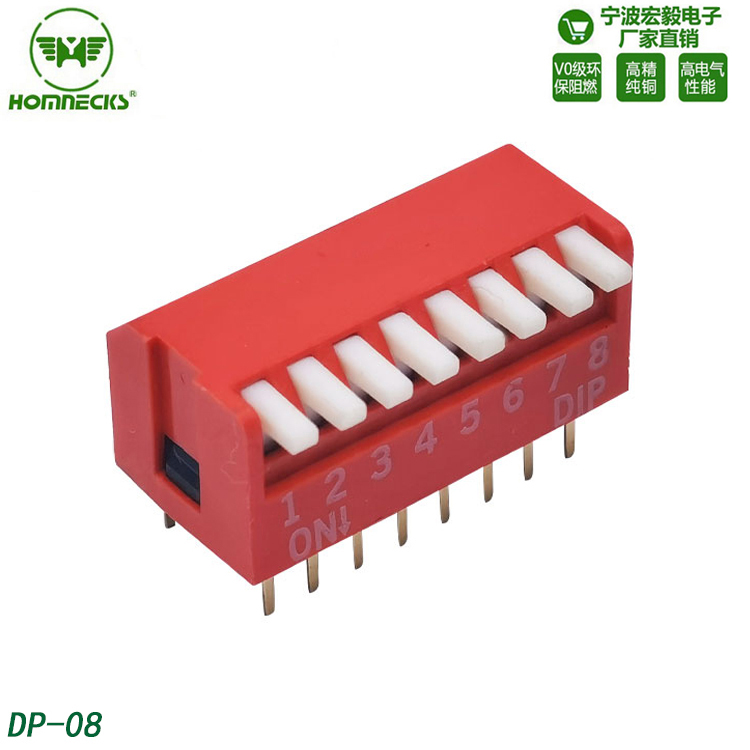
DIP switches, also known as "dual in-line package switches," typically consist of a housing, pins, contacts, springs, and a toggle part.
1. Plastic Materials:
The outer shell of most DIP switches is made of plastic due to its good insulating and flame-retardant properties, as well as its ease of molding and surface treatment. However, plastic materials have lower mechanical strength and are susceptible to damage from external forces.
2. Metal Materials:
Metal materials offer higher strength and wear resistance compared to plastic, making them suitable for applications where durability is crucial, such as transportation and shipbuilding. Nevertheless, metal materials come with challenges related to conductivity and oxidation.
3. Ceramic Materials:
Although ceramic materials are more expensive, they provide excellent temperature resistance, wear resistance, and mechanical strength. DIP switches used in high-temperature and high-pressure environments often utilize ceramic. However, ceramic materials are brittle and prone to breakage from external impacts.
Each material has its unique characteristics and is chosen based on the specific requirements of the application. If you have any further questions or would like to discuss the selection of materials for DIP switches in more detail, please feel free to reach out.